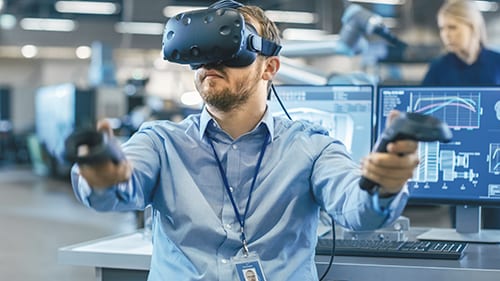 As industrial professionals face growing consumer demand in 2020, they’ll have the choice of adopting the latest manufacturing industry trends to meet their business goals.
As industrial professionals face growing consumer demand in 2020, they’ll have the choice of adopting the latest manufacturing industry trends to meet their business goals.
These trends largely revolve around digital transformation that can give manufacturers increased visibility into operations, quality, cost savings and efficiency.
8 manufacturing industry trends to watch for in 2020
- The Industrial Internet of Things (IoT) is revolutionizing production. Multiple aspects of our personal lives – from the devices we carry around, to the homes we live in, to the vehicles we drive – are becoming more connected and automated. The same rings true for the manufacturing world, which is entering an era of greater efficiency by means of IIoT. Technology empowering the modern smart factory is gaining wider adoption because it can predict customer orders in advance, reduce lead times and improve product turnaround.
- With artificial intelligence (AI) and machine learning come improved speed and convenience in the supply chain. AI helps automate industrial operations, reducing the time needed to learn manual operation skills. Additionally, it enables data-driven forecasts that boost accuracy and efficiency, as well as advanced prescriptive analytics that can help reduce waste and improve margins.
- Fifth-generation technology (5G) is highly anticipated for 2020. 5G has the potential to exceed the expectations of consumers when it comes to faster connections and increased coverage, allowing for reliable real-time communication on a large scale.
- 3D scanning and printing will be simplified. This technology will be helpful in areas like reverse engineering, creating virtual spaces and performing quality inspections, allowing manufacturers to make faster, cheaper prototypes. It will also make it easier for companies to produce items on demand and more cost effectively.
- More manufacturers will utilize industrial wearables. Industrial wearable technology, such as smartglasses, biometric sensors and the exoskeleton, will lead to greater efficiency and less human reliability.
- Augmented reality (AR) and virtual reality (VR) will contribute to advanced partnership between man and machine. Manufacturers can use this technology to make modifications and additions to products during the product design stage. They can also use it to decrease inspection time and assist in detecting errors. By using electronic goggles, for example, workers can experience computer-generated graphics to provide them with real-time help when it comes to performing a task.
- Mobile robots will help fill a workforce void. For example, finding and keeping good forklift operators and truck drivers is becoming more difficult, which has some industrial companies removing humans from material handling tasks altogether. In turn, manufacturers are turning to mobile robots for increased efficiency.
- Distributed manufacturing facilities are becoming an alternative to larger plants. This phenomenon is picking up speed because manufacturing logistics are becoming more connected. The idea is for final products to be assembled and packaged as close to their eventual destinations as possible to minimize freight costs and reduce lead times.
Related posts
Manufacturing labor shortage | Get talent, close skills gap for future workforce
Advantages of digital manufacturing | 5 reasons to transform your facility